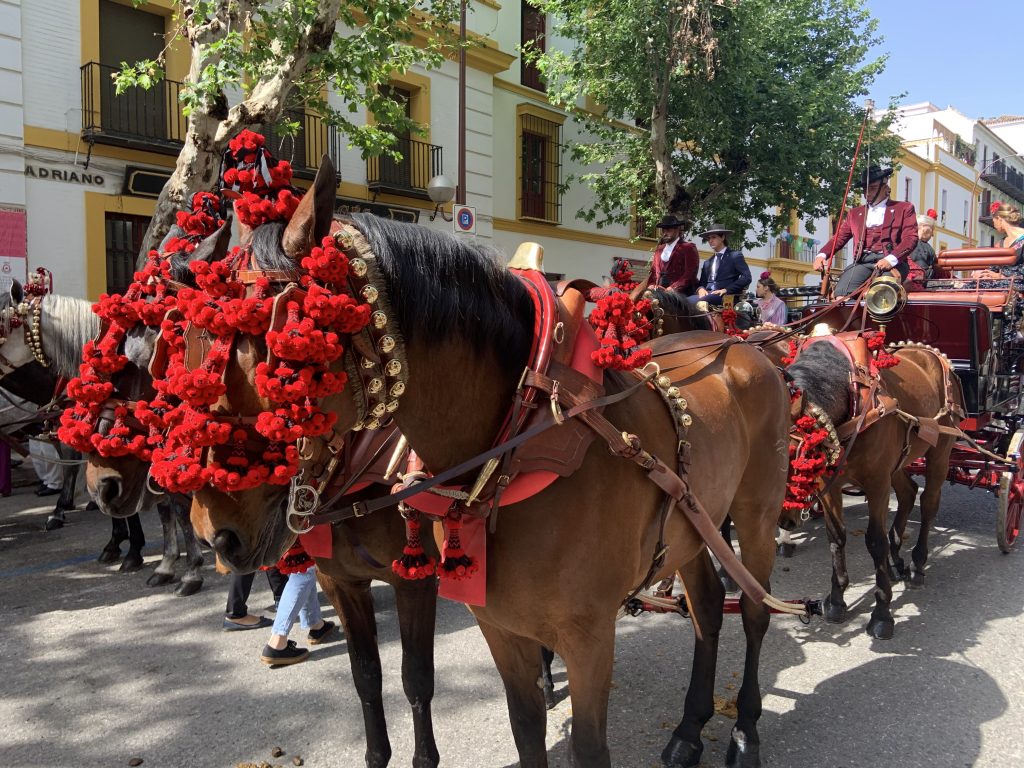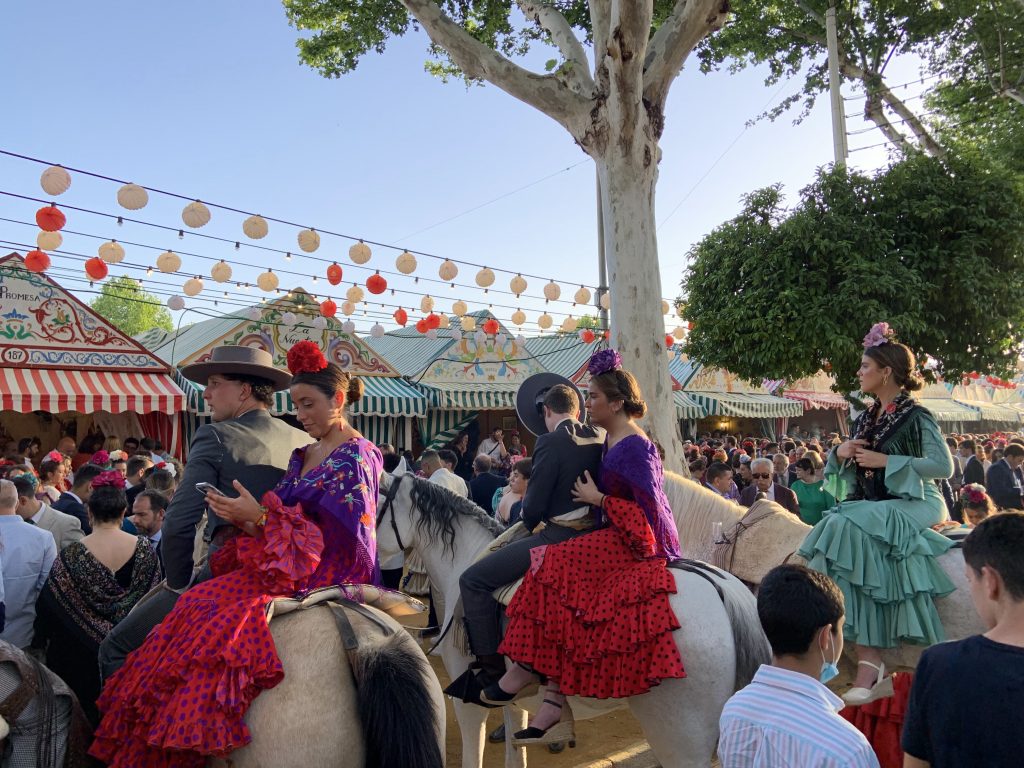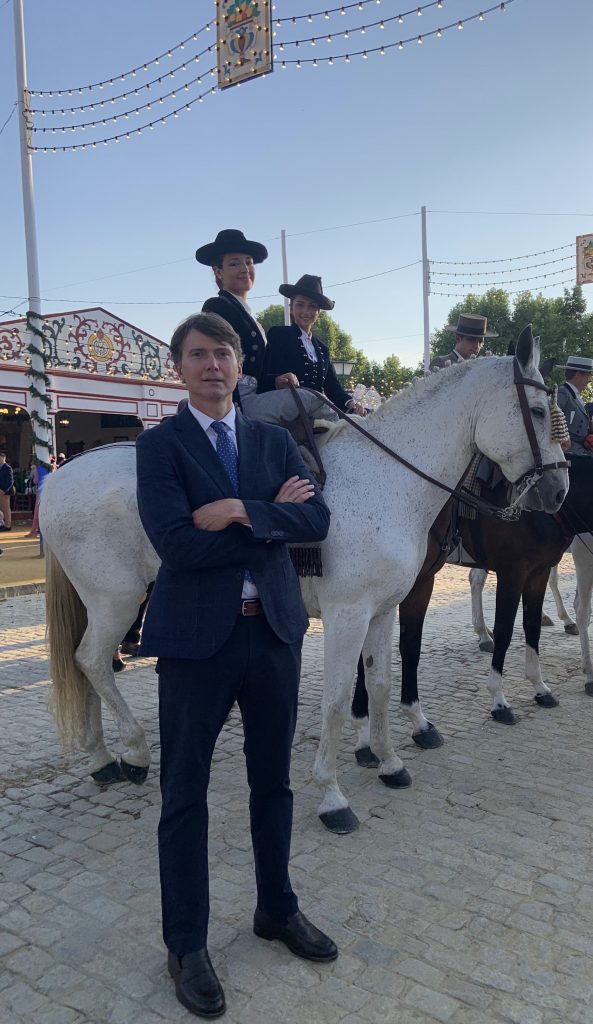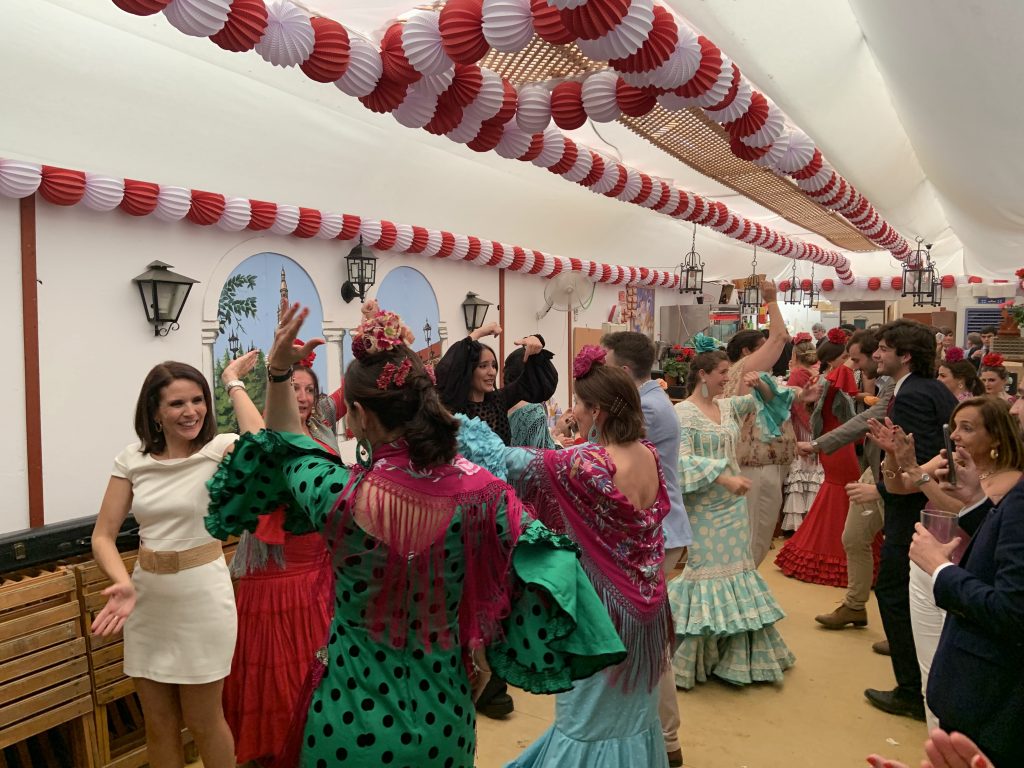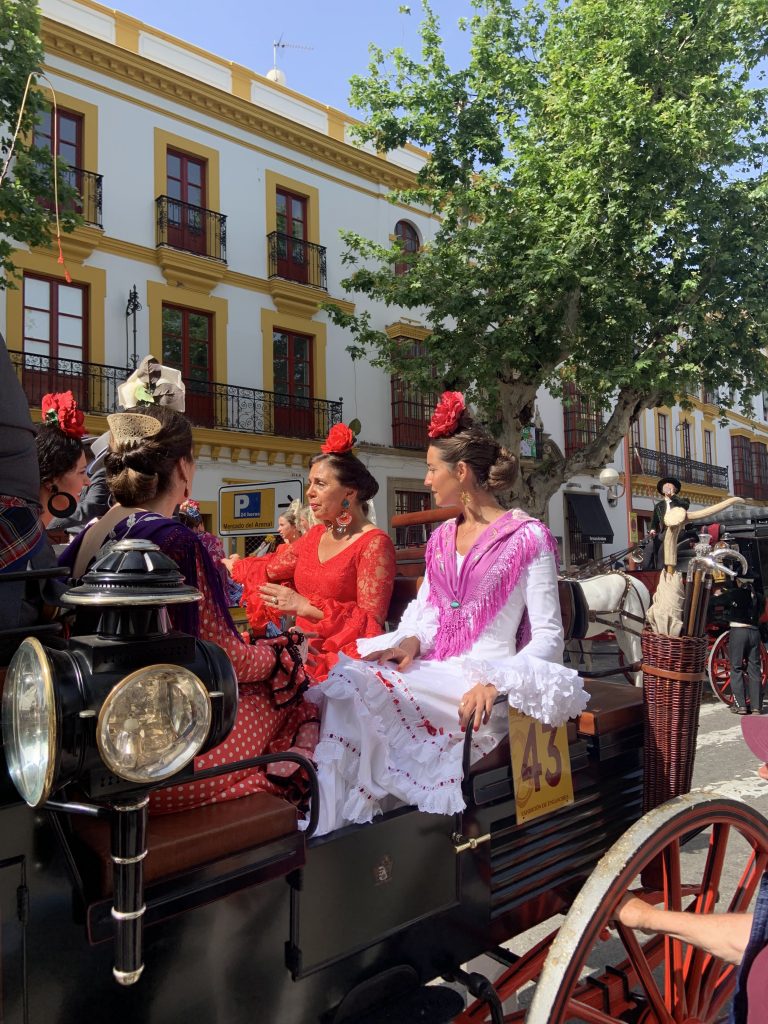This spring in Sevilla I was able to attend two different events that I had always hoped to experience, Semana Santa and La Feria de Sevilla. Each occasion was special in its own way. I will encapsulate, briefly, what I took away from each celebration and will post some photos about the two events within this blog post. It was nice to celebrate these two events with two different clients who happened to hire me as a guide during the busiest weeks of the year!
Semana Santa or Holy Week, while being a huge festival during Easter, seemed to have a more austere tone throughout the week. Religious processions filled the streets with bands playing somber songs as specific religious orders accompanied their saint to the Cathedral for blessings and then would trudge their way through the swollen masses back to their own neighborhood churches. Women wore traditional black headdresses or “mantillas” with dark dresses and many men would wear dark suits to mirror the solemn nature of Semana Santa. Those of the religious orders processing with their saint would wear “capirotes” which are the masks with a narrow point at the top. Americans who see this dress are often put off because it is a stark reminder of the headgear of the KKK in the South during Reconstruction. Nevertheless, this religious apparel, a symbol of penitence, predates the American Reconstruction by hundreds of years and the Spanish see absolutely no connection between their religious customs and the usurpation of the same dress by the KKK in the late 1800’s American south. Along with the penitents, walk the groups of Roman soldiers, who emulate the actions of the oppressor Romans as Christ was paraded through the streets. The processions begin about eight days before Easter Sunday which is the culmination of Semana Santa. At midnight on Friday, just before Easter Sunday is the most important moment of the religious processions. It is called “Viernes Santo” or Holy Friday (even though it begins at midnight leading into Saturday) and the biggest cathedrals around Sevilla such as Jesús del Gran Poder and La Macarena will process their saints to the main cathedral. This continues through Saturday morning and you hear bands playing throughout the city into the morning hours. Semana Santa in Sevilla may be one of the holiest experiences in the Catholic faith across the globe. Finally being able to live it all week has helped me to better understand both the structure of the event and most importantly the importance of the event to the Spanish faithful.
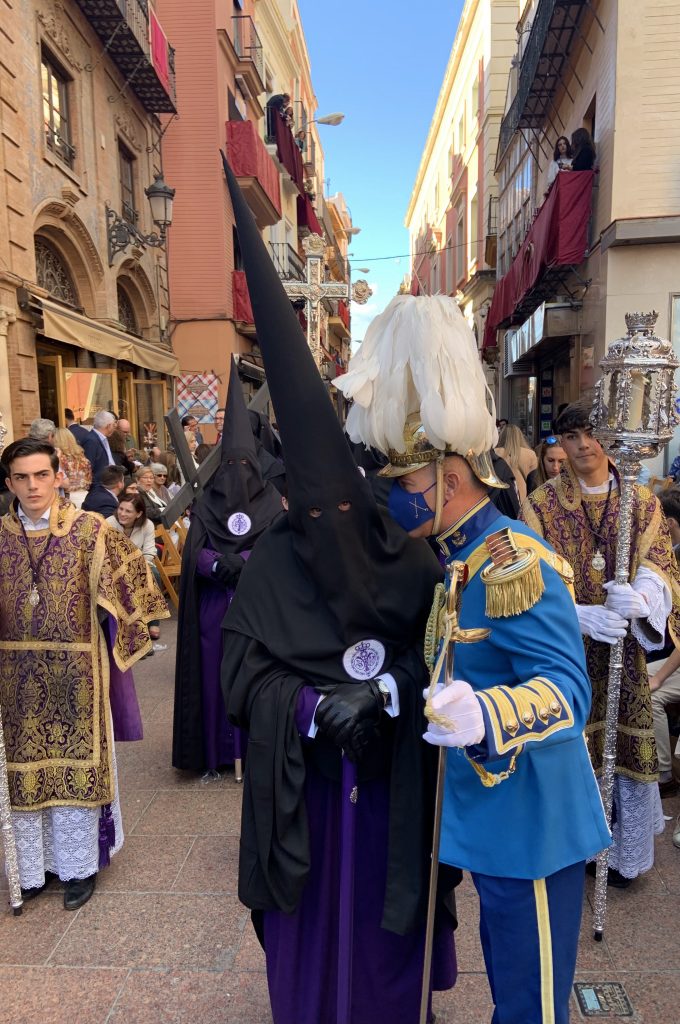
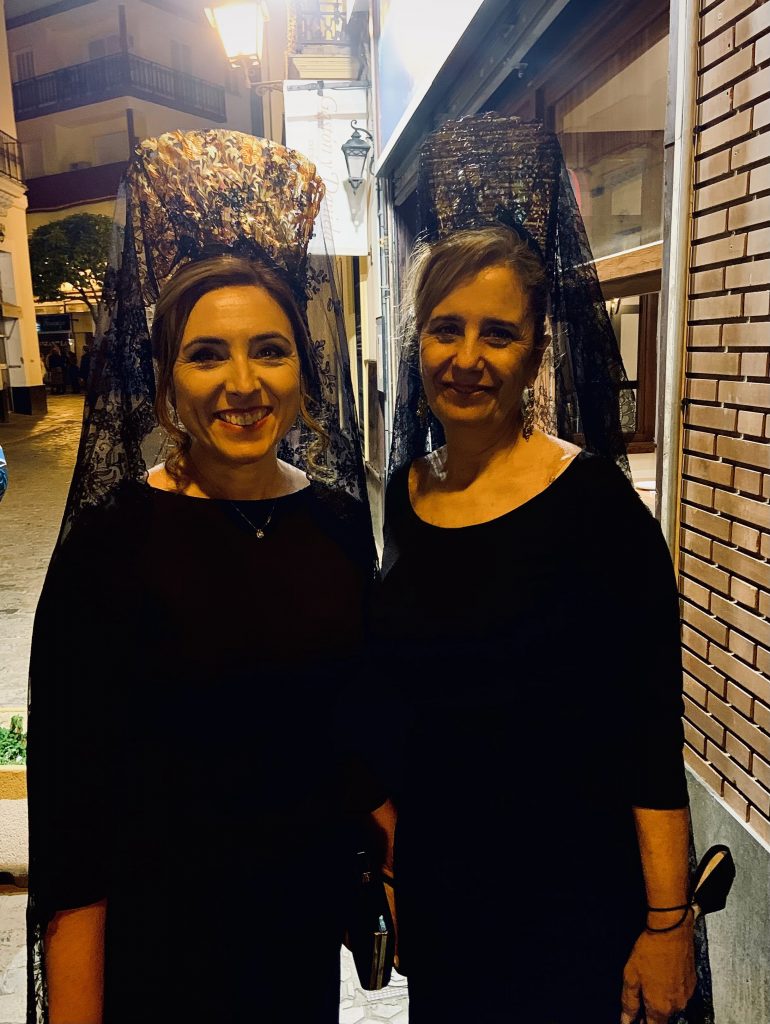
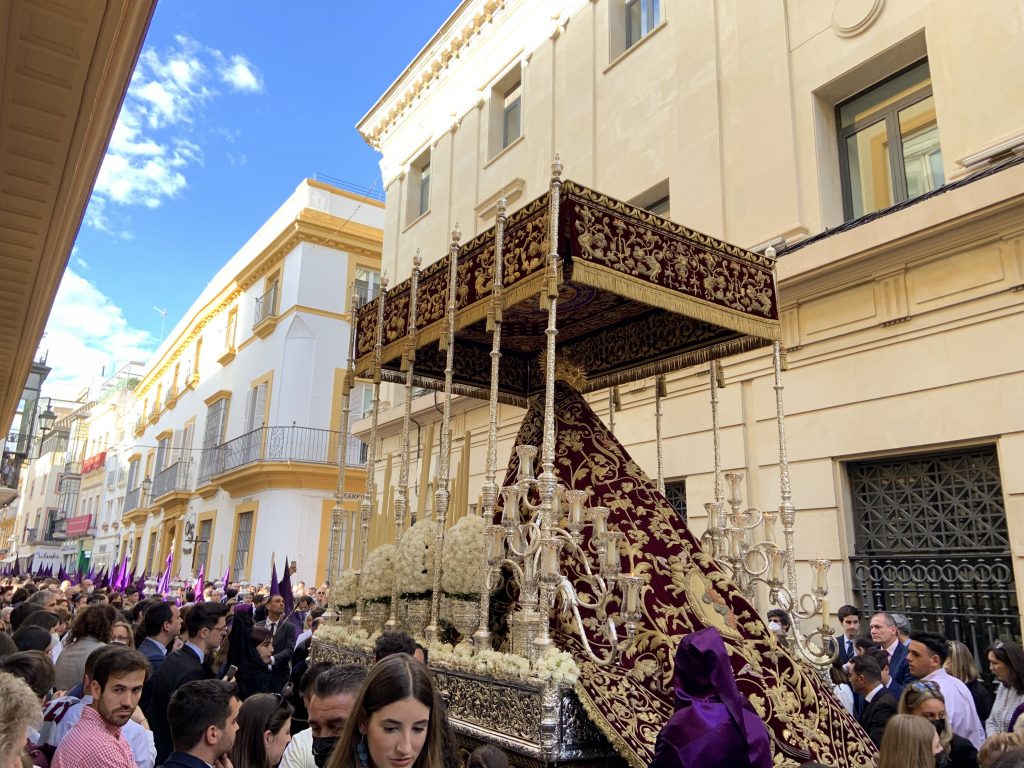
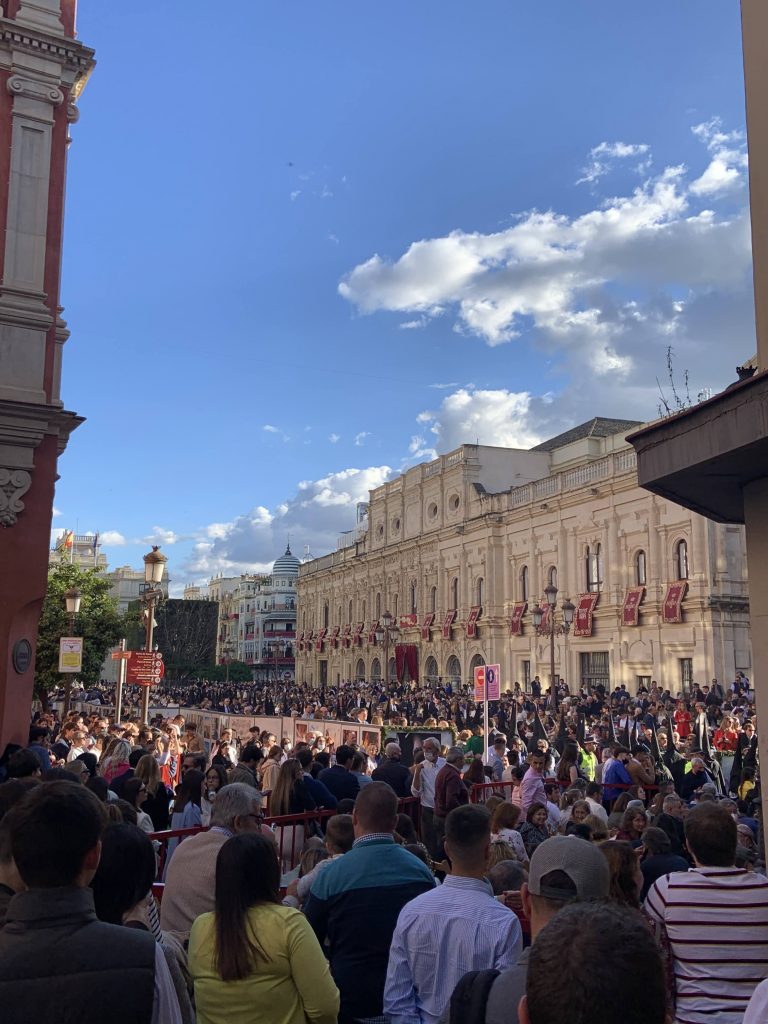
On the other end of the spectrum, what many consider one of the biggest parties in Spain, is La Feria de Abril or la Feria de Sevilla. Traditionally, it has been called the April Fair but depending on when Easter Sunday lands that year, la Feria can be pushed into May. Like most county fairs in the US, la Feria began as a way to bring livestock into Sevilla for auctioning. Like Semana Santa, its history goes back hundreds of years. What still remains from the past is the tradition of arriving on horseback or in carriage. Literally, thousands of horses move about la Feria with their colorful riders proudly mounted above, often with a glass of sherry in one hand and the reins in the other. The fair takes place just south of the city at a specially dedicated fairgrounds where families and groups spend all week getting together in their “casetas”. These casetas or tents are raised by the municipality and there are only a certain number of casetas. Generations of families have had the same casetas and you almost never give it up or it may be decades before one opens up again. In the casetas, barmen and cooks are hired to serve the entire week and often, they will sleep at the fairgrounds and even above the casetas in makeshift quarters. The members of the caseta have paid their dues to pay these cooks and bartenders for the week and many casetas have used the same families for generations to be their cooks. Entrance into the casetas can be tricky if you are not a member. But, if you know a friend who is a member, getting into his or her caseta is not a problem. You will be introduced to many members of that caseta and if you pass muster, you are set for the week! Inside the casetas, there is often a live band playing the traditional “Sevillanas” music and guests pair up and dance throughout the night. “The Sevillana” is a dance with steps where you switch sides over and over with your partner and is very beautiful when you see a room full of hundreds of people dancing it. Along with the dancing and eating is of course, heavy amounts of drinking and the beverage of choice during Feria is “jeréz”, “manzanilla” and “finos”, all regional variations on sherry. Another curious drink that is also the rage is a combination of sherry and 7-Up which is called a “rebujito”. I cannot recall how many “jarras de rebujito” pitchers of rebujito that we went through throughout the day! It is a very refreshing drink though, especially in early May in Sevilla where the temperatures can reach 90 degrees F. I could go on about La Feria but I will end with saying that it was one of the most memorable experiences of my life. The musical ambience, the vibrant colors of the flamenco dresses, the striking women riding their horses on side saddle, the elegant mayhem, and the generous camaraderie among friends will stay vivid in my memory forever.
